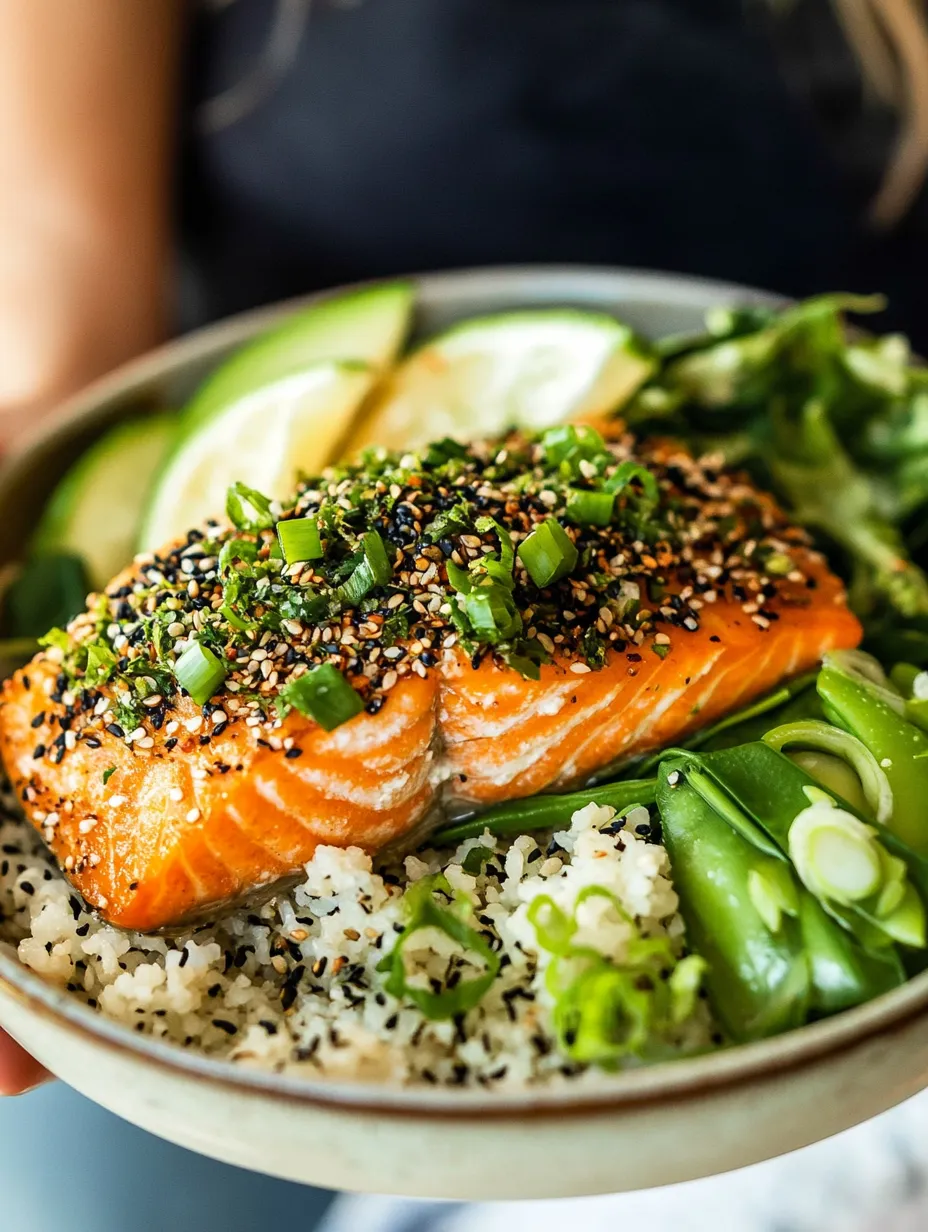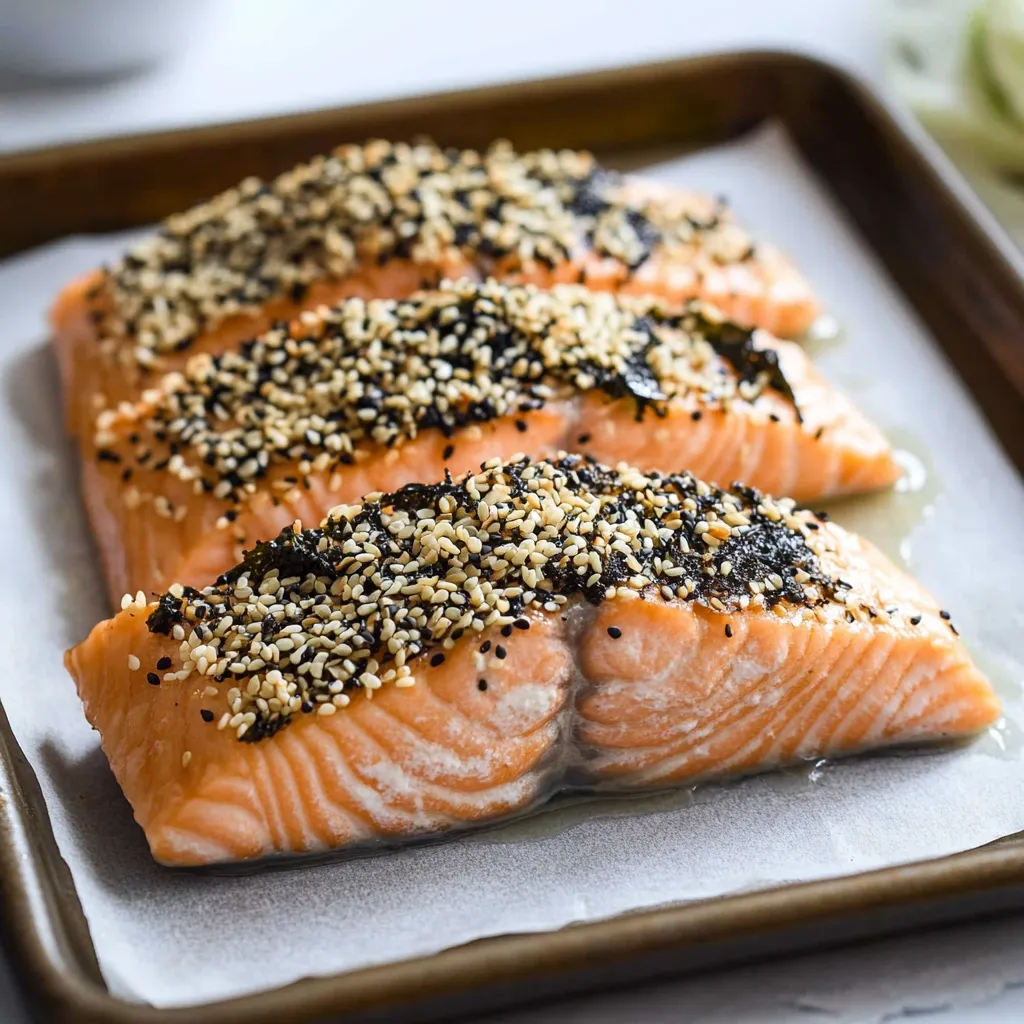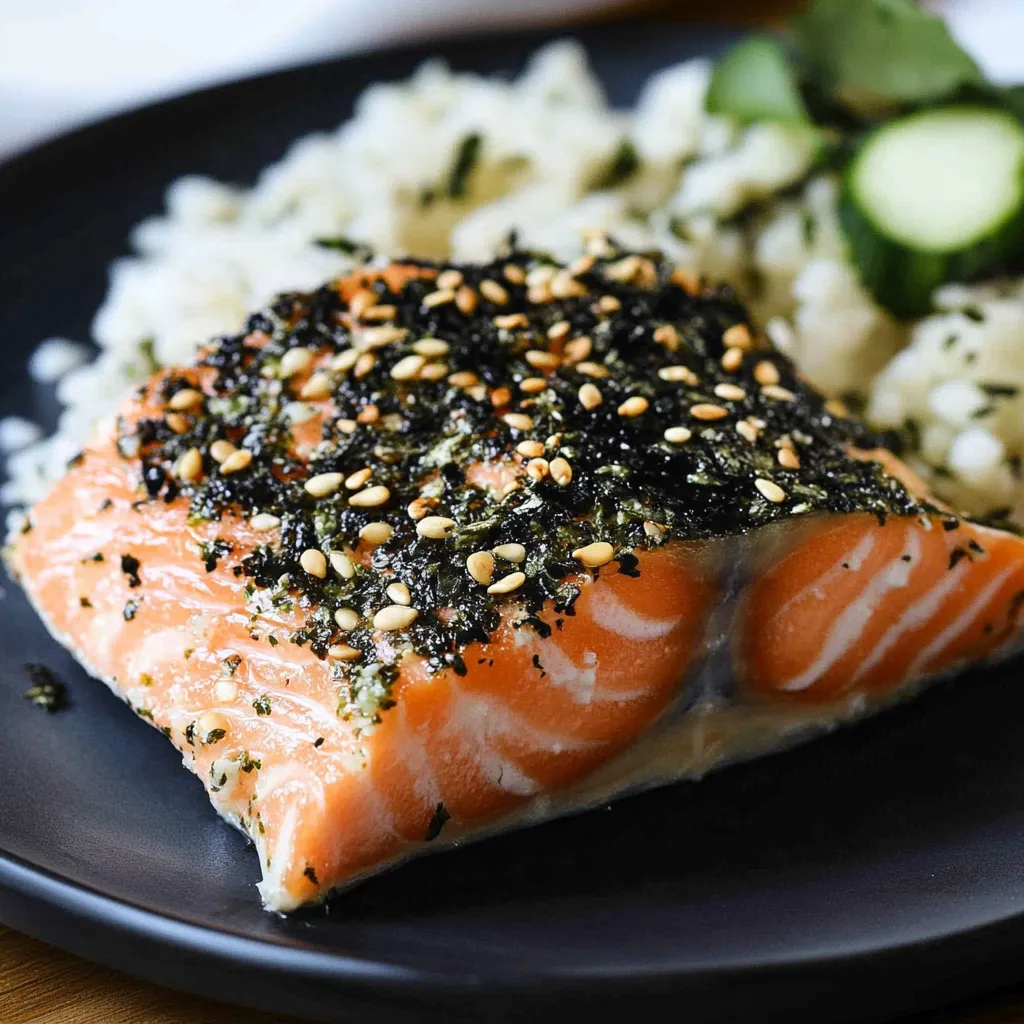 Pin it
Pin it
Nailing a fantastic Furikake Salmon boils down to getting that sweet spot between tasty flavors and the right cooking method. After trying this dish many times, I've found the real trick is how you put on the mayo mix and getting that salmon just right - tender and flaking apart nicely.
I made this for some friends last week who weren't sure about putting mayo on fish. They couldn't believe how the Kewpie created this smooth, tasty layer while keeping the salmon super juicy. What's the trick? Make sure you spread the mayo mix all over and don't go light on the furikake.
Key Ingredients and What They Do
- Kewpie mayo: Makes a moisture seal and adds rich flavor
- Shoyu: Gives the dish its deep, salty kick
- Furikake: Offers crunch and classic Japanese taste
- Wasabi: Adds a mild kick and flavor layers
- Fresh salmon: Go for similar-sized pieces that look bright
 Pin it
Pin it
Step-by-Step Cooking Guide
- Getting Your Fish Ready
- Fully dry your salmon with paper towels so the mayo sticks better. Let it sit out until it's room temp. Look for any tiny bones. Only add salt if you need to since shoyu has plenty.
- Getting The Mayo Just Right
- Spread it all the way to the edges. Keep the layer on the thinner side. Push the furikake into the mayo gently. Make sure you've covered everything.
- Baking It Perfectly
- Get your oven nice and hot first. Put the fish on the middle shelf. Watch for when the color changes. Check if it flakes without breaking apart.
 Pin it
Pin it
I've found through lots of cooking that letting the salmon sit for a bit after it's done helps the flavors come together and makes it easier to serve.
This Furikake Salmon brings together the best of Japanese and Hawaiian cooking styles. The way the creamy mayo protects and flavors the fish while the furikake adds that wonderful crunch makes something that's both easy and fancy at the same time.
Prepping This Meal Ahead
Make your salmon cooking faster:
Mix up your mayo sauce the day before
Cut salmon into serving sizes early
Cook your rice ahead and save it
Have furikake ready in a little container
Fixing Common Problems
After making tons of salmon dinners, here's what works:
If your salmon turns out dry: Cook it less time
When furikake won't stick: Push it harder into the mayo
If there's too much mayo: Use a spoon back to thin it out
When the middle isn't cooked: Let fish warm up before cooking
Foods That Go Great With It
Round out your dinner with:
Hot Japanese rice
Fast pickled cukes
A bowl of miso soup
Green beans with sesame
Changing With The Seasons
The main dish works with different sides year-round:
Spring: Try it with fresh asparagus
Summer: Add a cool cucumber dish
Fall: Serve with sweet roasted squash
Winter: Pair with cooked Asian greens
 Pin it
Pin it
This Furikake Salmon isn't just dinner - it shows how a few good ingredients can turn into something amazing when cooked right. Whether you're feeding your family or having friends over, it's both simple and impressive.
Good salmon cooking is all about treating the fish right and making its natural taste even better. From buying good stuff to preparing it carefully, every step matters in making a meal you'll remember. The way Kewpie mayo shields the fish while furikake adds that nice crunch and flavor makes this perfect for busy weeknights.
This dish shows you don't need fancy tricks or hours in the kitchen for great food. When you combine good ingredients with simple cooking know-how, you end up with something that's easy to make and really tasty.
Frequently Asked Questions
- → What exactly is furikake seasoning?
- Furikake is a Japanese mix with nori seaweed, sesame seeds, sugar, and salt that adds a delicious umami kick to rice and fish.
- → Can regular mayo replace Kewpie?
- Sure, regular mayo works too, though Kewpie offers richer flavor if you can find it.
- → How can I tell if the salmon’s ready?
- It’s done when it flakes easily with a fork, usually after 12-14 minutes in the oven or about 10-12 minutes in an air fryer.
- → Where do I buy furikake seasoning?
- Look for it in the Asian aisle at the grocery store, at Asian markets, or online.
- → Can this dish be made ahead?
- It's best fresh, but you can refrigerate leftovers for 2 days and enjoy them cold or warmed up.
